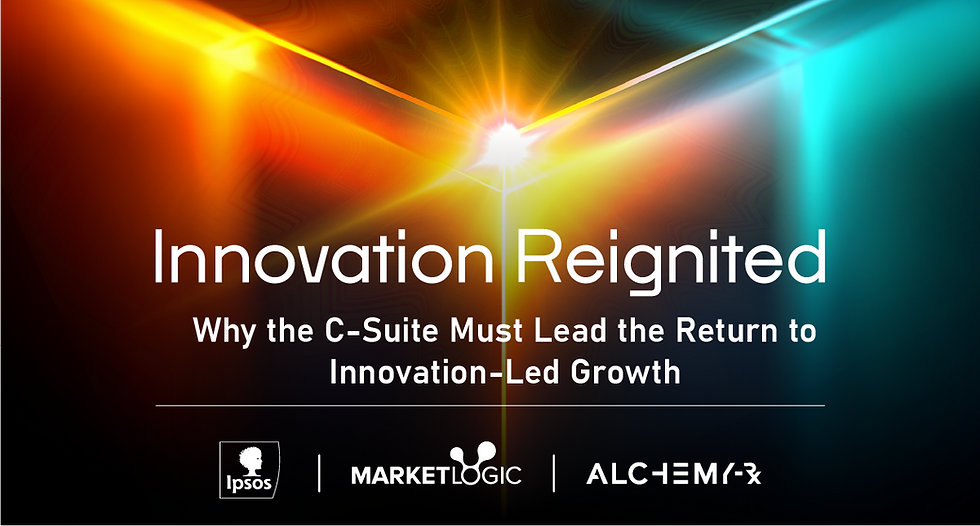Putting AI In The Driver's Seat
- Bo Roe

- Apr 23
- 4 min read
If there's one area where AI adoption creates genuine anxiety for brand leaders (and even more so for designers), it's creative development. While process automation or analytics applications may face implementation challenges, creative AI touches something more fundamental and deeply engrained – the distinctive voice and personality that defines your brand in the marketplace. I've been struck by the polarization in this discussion. In an ANA study last year they showed that 76% of marketing leaders express concern about maintaining brand distinctiveness while using AI in creative processes, while at the same time, nearly 70% report they're already using some form of AI in their creative pipeline. This disconnect between anxiety and adoption points reinforces that underlying truth that the creative AI conversation is still dominated by extremes that don't reflect reality.
Beyond the Binary Debate
The most counterproductive framing I encounter is the notion of "AI vs. creatives" – a false dichotomy that pits technology against human creativity. This binary thinking is both misleading and unhelpful and luckily seems to be waning as the pan flash of Midjourney and the like subsides. The most effective creative processes combine human and machine capabilities rather than choosing between them; the critical question isn't whether to use AI, but how to deploy it strategically to enhance rather than replace human creativity. While this seems obvious we need to take the logic a step further – rather than just injecting AI into existing processes, we need to use the opportunity to redesign the processes from the start with AI as an "idea multiplier" rather than a replacement for human concepting.
Several forward-thinking consumer brands are finding the sweet spot between creative freedom and AI guardrails. Nike's application of generative AI in their product design process has compressed development cycles by 35% while expanding the creative territory their designers can explore. Spotify transformed their creative production model using what they call "creative intelligence" – a framework that uses AI to analyze performance patterns across thousands of creative executions to generate guidance and potential directions for human creative teams. According to their published results, its increased creative effectiveness by 25-30% while reducing production costs by nearly 40%. The common thread here is thoughtful implementation that joins up the value AI can bring, strong brand integrity, and a continued respect for creative culture.
Implementation makes or breaks AI value
Organizations that frame AI capabilities as extensions of human creativity rather than substitutes of it achieve both higher creative output and better team satisfaction. This insight has been consistent across our client engagements – the mindset shift must precede the technology implementation. Two-thirds of creative AI initiatives stall because of poor integration between human and machine workflows (Bain & Co., 2024), and most of those failures occur at the handoff points: strategy to concept, concept to refinement, and approval to execution. Different stakeholders, unique systems, and disconnected success metrics create friction at each point along the way. The most successful implementations we've seen address these handoffs explicitly having designed clear processes with straightforward documentation and decision rights for how and when work moves between human and machine systems. The tech itself is rarely the limiting factor; it's those pesky people and organizational systems that determine success. My hunch is if we looked under the hood of most of the failures Bain found in their study, we’d see attempts at layering AI on top of existing processes rather than reimagining them with AI as an enabler.
Even after embracing AI as an enabler, an important distinction emerges between "AI-assisted" and "AI-led" creative development. In AI-assisted approaches, human creatives remain the primary drivers, using AI selectively to overcome specific challenges or expand their capabilities. AI-led approaches position these technologies as the primary creative engine, with humans providing guardrails, refinement, selection and application. AI-assisted approaches tend to be more effective for high-stakes, brand-defining creative work, while AI-led approaches are better for operational creative production like localization or format adaptation. Key insight here --- unless your creative team is only working on one of these types of work, your process is going to need both approaches. More importantly – you’re going to need a mechanism for shifting between them.
Reimagining the Creative Brief
Traditional briefs were designed for people, often leaving substantial room for subjective reading and ‘you-know-what-I-mean’ mutual assumptions. As more and more creative teams are working in AI-Assisted and AI-Led models, "dual-audience briefs" (designed to be equally readable for both human creatives and AI systems) become increasingly important. They include traditional elements like objectives and audience insights, but add structured creative parameters that can be used to generate prompts or frame context for AI systems. By putting core structured prompt drivers directly in the brief, we bypass (mis)interpretation and drive better alignment between client, creative, and the machine. While on the surface this seems a relatively mundane shift – in real terms it means brand owners need to be well versed in prompting and understand how creatives are using AI to ensure the briefs they provide fit within this information architecture. The mantra, ‘better briefs for better results,’ was never more relevant.
Moving Forward
As you consider how AI fits into your creative future, I'd offer three guiding principles.
Focus on mindset before technology. Help your organization move beyond binary thinking about AI and creativity.
Be intentional about AI-assisted versus AI-led approaches. You’ll need both, but use each as best suited for creative challenges.
Pay particular attention to the handoff points. Sweat the points where human and machine systems intersect.
The brands gaining advantage aren't necessarily those with the most advanced AI tools, but those thoughtfully integrating these capabilities into well-designed creative processes. In the next post in this series, we'll examine the capability gap that many organizations face when implementing AI – not just in creative development but across the enterprise.


